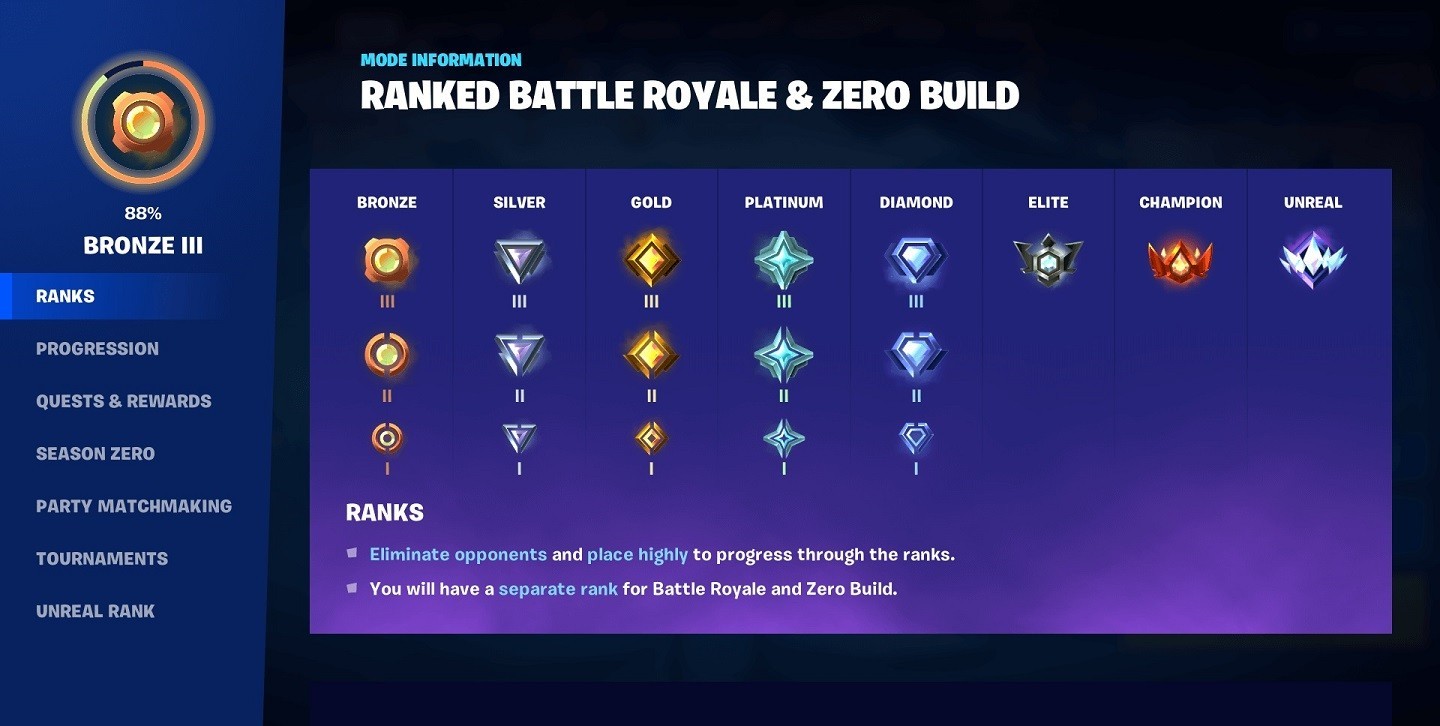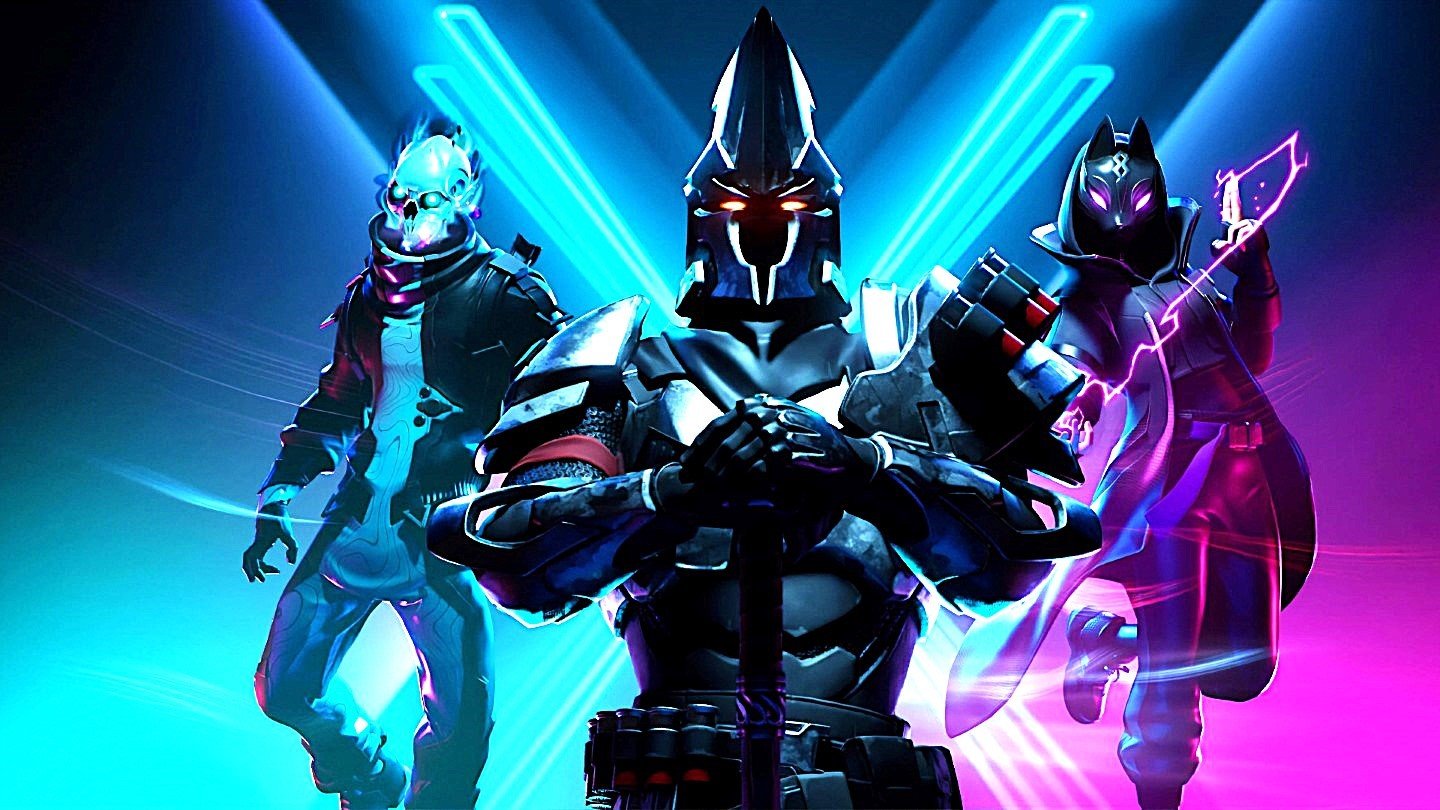In Fortnite’s Ranked Mode, unlike the classic Battle Royale, match results affect a player’s position in the ranking system. The higher the tier, the tougher the opponents and the more valuable the rewards. This new system replaced the old Fortnite Arena mode, making progression clearer and more balanced. Let’s look at how it works and what leads to a rank increase.
How the Ranking System Works in Fortnite

In the old mode, progression depended on Fortnite arena points, which were awarded for participating in matches. However, this system allowed players to climb the ladder simply by playing a large number of games rather than demonstrating actual skill. This led to unbalanced matches, where experienced players could face those who had merely accumulated points through passive play.
Now, every player starts with a calibration period—the first matches that determine their initial level. The final rank depends on the performance in those games: success on the battlefield, number of eliminations, overall effectiveness, and final placement in the match.
There are eight ranks in Fortnite:
- Bronze—The starting rank for newcomers learning the competitive mode.
- Silver—For those who have some experience but are not yet showing consistent results.
- Gold—Confident players who are well-versed in mechanics and tactics.
- Platinum—A higher rank where not only shooting skills but also smart positioning and tactical thinking are crucial.
- Diamond—A serious level where opponents use complex strategies, making matches more intense.
- Elite—One of the highest ranks, accessible only to strong and consistent players.
- Champion—A category of top players displaying a high level of skill and the ability to outplay tough opponents.
- Unreal—The elite rank, home to the best of the best.
The first five ranks are divided into three subdivisions, for example: Bronze I, Bronze II, Bronze III. Players are matched based on their rank to ensure fair competition. At higher ranks (starting from Elite), matchmaking may include opponents from nearby tiers to reduce waiting times.
Players can move up or down in the ranking system. If you lose too often, you can lose rating points and drop back to a previous division. However, Unreal is the final rank, and once reached, it cannot be lost. There is an internal ranking system within Unreal that determines a player’s position among the top competitors.
When a new season starts, players go through calibration again. Their previous rank isn’t completely reset, but it may shift depending on last season’s results. A high-ranked player won’t start the season from scratch, but they might be placed slightly lower to prove their skill again.
How to Raise Your Rank
 Image: dignitas.gg
Image: dignitas.gg
Progression in the ranking system depends on match success. The better a player performs, the faster they climb. However, competition becomes tougher as you rise in rank, and the rating rules change accordingly.
Placement in the Match
Final position in the match plays a key role in moving up the ranking system. The higher you place, the more rating points you gain:
- Winning a match gives the maximum rating boost, as it’s considered the main measure of success.
- Finishing in the top 10 also grants a significant rating bonus. Even if you don’t win, consistently placing high contributes to steady progression.
- Getting eliminated early doesn’t earn points, and at higher ranks, it can even lower your rating.
To steadily improve your rank, it’s important not only to eliminate enemies but also to survive as long as possible in the match.
Eliminations
 Image: obsbot.com
Image: obsbot.com
Eliminating opponents helps increase your rank:
- Each elimination increases your rating, but its impact depends on your current rank. At lower ranks, you earn fewer points for kills; at higher ranks, you earn more.
- Eliminations in the late game are valued more than early-game kills. In the final stages, only the strongest players remain, and defeating them yields more rating points.
- Both personal and team eliminations count. If you deal significant damage to an opponent before a teammate finishes them off, you also benefit in rating.
An aggressive playstyle can speed up ranking, but it also increases the risk of an early exit. Balancing offense and strategy is crucial.
Team Play
In Duos and Squads, not only individual achievements matter, but also a player’s contribution to the team’s success. Healing allies, reviving fallen teammates, and sharing useful items help the team stay in the fight and increase their chances of winning.
Coordinated teamwork provides a collective advantage and speeds up rank progression. Even without many kills, you can still earn a stable rating by effectively supporting your teammates.
What Rewards Can You Get
 Image: youtube.com
Image: youtube.com
Fortnite’s Ranked Mode not only tests players’ skills but also offers the opportunity to earn unique rewards. They are given for progressing through the ranks and completing special challenges.
Players who participate in ranked matches can earn exclusive cosmetic items that are not available in the regular in-game shop:
- Rank emblems and badges displayed in the lobby to show a player’s current level.
- Emotes and sprays used in matches to highlight achievements.
- Exclusive skins are awarded for completing special challenges in Ranked Mode and are only available for the duration of the season.
Players who reach the Unreal rank gain a unique status and appear on the global leaderboards. These charts display only the best players, and their positions update in real time. Furthermore, a high rank can grant access to Fortnite esports events, provided the player meets the tournament requirements.
Useful Tips for Ranking Up
 Image: fiverr.com
Image: fiverr.com
To advance in Fortnite’s Ranked Mode, you need not only strong gameplay skills but also the right strategy:
- Study the map and key areas. Knowing the terrain well helps you quickly find resources and weapons and choose advantageous positions.
- Play to your strengths. A good marksman can adopt an aggressive playstyle, while a more tactical player might choose a patient approach, hiding in cover and avoiding early confrontations.
- Choose your landing spot based on your playstyle. If you prefer aggressive tactics, land in busy locations. For a cautious start, pick quieter zones with enough loot.
- Control the high ground. Having a higher position provides more tactical advantages. It’s easier to shoot enemies from above, and you’re harder to hit.
- Stay aware of your surroundings. Remain in the safe zone, but plan escape routes in advance so you don’t get caught between enemies.
- Play with trusted teammates. In ranked matches, coordinated team actions often decide the outcome. Good communication and cooperation significantly increase your chances of victory.
- Develop quick reactions and speed. Being able to make instant decisions and build cover on the fly helps maintain control.
- Learn from top players. Watch professional streams and analyze their tactics to find useful tips you can apply in your own matches.
- Keep an eye on updates. Epic Games regularly changes weapon balance, map elements, and mechanics. Read patch notes and adjust your strategy to maintain an advantage.
Consistent practice, learning from mistakes, and adapting to various situations will gradually help you move up. The main thing is not to fear tough matches—keep improving and enjoy the process. Over time, things will get better and better, and you’ll steadily climb the ranking system.
Main image: wallpaperflare.com




















0 comments